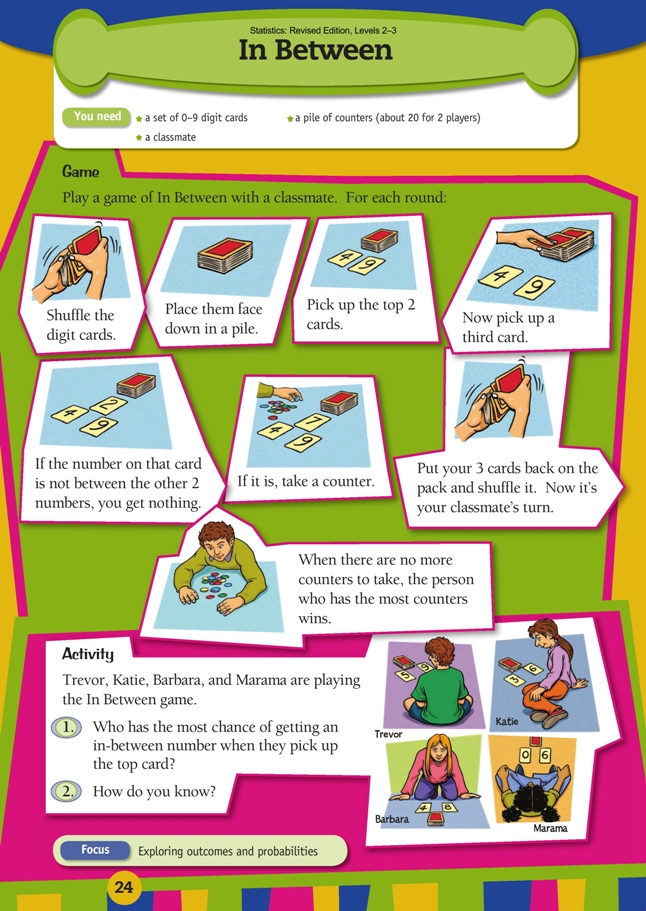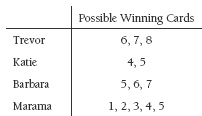In Between
This is a level 2 statistics activity from the Figure It Out series.
A PDF of the student activity is included.
Click on the image to enlarge it. Click again to close. Download PDF (1392 KB)
explore probabilities in a simple game
This diagram shows the areas of Statistics involved in this activity.
The bottom half of the diagram represents the 5 stages of the PPDAC (Problem, Plan, Data, Analysis, Conclusion) statistics investigation cycle.
- FIO, Levels 2-3, Statistics Revised Edition, In Between, page 24
- A pile of counters (about 20 for 2 players)
- Numeral cards
- A classmate
This simple game of chance provides a scenario in which students can easily analyse the probabilities for any given hand. Only one set of digit cards is needed: each person completes their turn, returns their three cards to the pile, shuffl es the pack, and hands the complete set to the next person. If preferred, however, each player could have their own set of 10 cards.
In the game shown, 4 and 9 are the two cards face up. There are 8 cards left in the pile. Out of the 8 cards, four {5, 6, 7, 8} will satisfy the “in between” requirement. This means that the probability that the player will pick a winning third card and gain a counter is 4 in 8 (or 4 out of 8).
“4 in 8” can be expressed as 4/8 or 1/2 or 0.5 or 50%.
“4 in 8” can also be expressed as a ratio, in which the number of ways of winning is compared with the number of ways of losing, in this case 4:4, which can be simplifi ed to 1:1. Gamblers sometimes say such “odds” are “even” or “fifty-fifty”.
A number strip that is labelled for the remaining cards and has the winning outcomes shaded can be used to demonstrate these different ways of naming the probability in this situation.
Note that, if your students are using ratios, they must not make the mistake of thinking that 4/8 = 4:8. 4:8 describes a situation in which the probability of losing is twice the probability of winning; in other words, a situation in which the probability of winning is not 4/8 or 1/2 but 4/12 or 1/3.
.
This table sets out the possible winning cards for Trevor, Katie, Barbara, and Marama, together with the probability of success in each case:
It can be seen that Marama has the greatest chance (more than even) of success.
Answers to Activities
A game exploring probability
Activity
1. Marama
2. There are five cards in the pile that would give Marama a win. This is more than for any of the other players:
Key Competencies
In Between can be used to develop these key competencies:
• thinking
• participating and contributing



